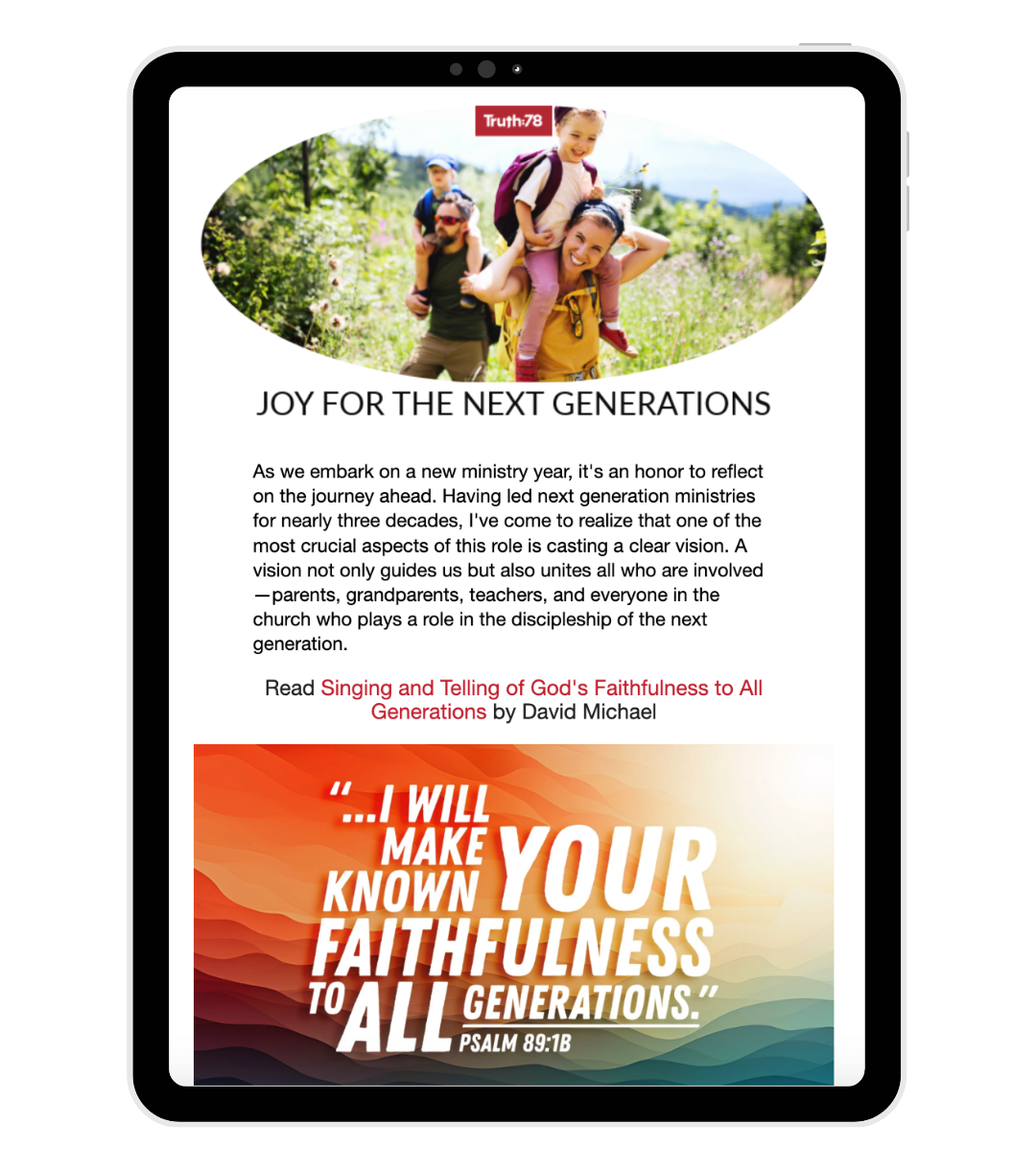Note: This post is excerpted from the introduction to More Than a Story: Old Testament. Much of this message applies to all Bible-focused reading with children, but More Than a Story was specifically written and designed to make the most of this interactive approach to reading.
There is a difference between reading with children and reading to children. Reading to children is when an adult reads and children listen; but reading with children is experiencing the story, the words, and the ideas together. It is an interactive exchange that takes place as the adult and the children discover meaning, wonder at the marvelous, mourn over the heartaches, ponder the incomprehensible, and rejoice in the beautiful together. Reading with children requires engaging your mind and heart in the text, letting your emotions overflow as you read together. It also takes a little bit of practice, a fair amount of abandonment, and, when reading to engage the heart and soul, a lot of prayer.
There are also some techniques we can employ in our quest to engage not only the minds of our children but also their hearts. Below are some suggestions to involve your children as you interact together to discover who God is, what He has done, and how we are to respond to Him.
- Pray briefly with your children before you begin reading. Ask God to open your minds and hearts and to show you who He is.
- Read with appropriate tone and emotion.The narratives and Scripture portions you will be reading warrant a response of enthusiasm, anger, sadness, joy, wonder—all kinds of emotions. Engage your heart in what you are reading and let your voice express that emotion.
- All the chapters include texts directly taken from the Bible itself. These are God’s precious words meant to impart life, convict the soul, strengthen the weak, encourage the heart, inspire worship, warn the rebellious, comfort the fearful; so they should be read with understanding, feeling, and conviction. These are not emotionless scripts, but the words of the living God, which “[revive] the soul . . . [make] wise the simple . . . [and enlighten] the eyes.” They should be read as such, for they are “more to be desired than gold . . . sweeter also than honey” (Psalm 19:7-10).
- Encourage your children to read some of the Bible texts so that they become familiar with God’s Word.
- Involve your children in discovering the glorious truths in the chapter. Explain concepts or words your children do not understand. Encourage your children to ask questions. Engage your children by interacting with them and asking them to interact with the text. Ask them to read a portion of the text or to read a Bible verse. Stop and ask questions both to capture their wandering minds and to encourage them to think deeply about the truth. Some questions are included in the text itself. Some are rhetorical, but others, in italics, are meant to be answered. In some cases, these may be a springboard to further discussion. Don’t feel tied to the text but add your own questions as you read.
- After asking a question for your children to answer...wait. Children need time to think. Sometimes they are intimidated and don’t want to give the “wrong” answer. Encourage your children to be contributors by gently encouraging them and waiting patiently. Respond encouragingly, while still correcting, clarifying, or redirecting when needed.
- Examine the pictures and ask questions about them. Help your children to see the emotion and the realities expressed in the illustrations.
- The goal is not to “get through the chapter” but to encourage your children to discover who God is and ponder the eternal. It may take one sitting to finish a chapter, or it may take many sittings. Take your time and linger over discussions. Stop when your children are ready to stop and pick it up again later.
- Follow up after you finish the chapter or at a later time with some or all of the ideas in the application boxes. It may take several sittings just to follow through on the application box.
- Apply the truths discovered in the chapter to everyday life. Be concrete and practical. How can the truth be lived out in your family, church, and your community? Ask your children how God may want them to act on what they have learned.
- Discuss the verse in the application box. Explain unfamiliar words, talk about the meaning and application of the verse. Check the context when needed.
- Memorize key verses and refer to them in everyday life, include them in your prayers, and encourage others with them.
As your hearts are drawn together through the shared experience of reading this book together, may your hearts be drawn to the One who “is the blessed and only Sovereign, the King of kings and Lord of lords, who alone has immortality, who dwells in unapproachable light, whom no one has ever seen or can see” (1 Timothy 6:15-16a).







